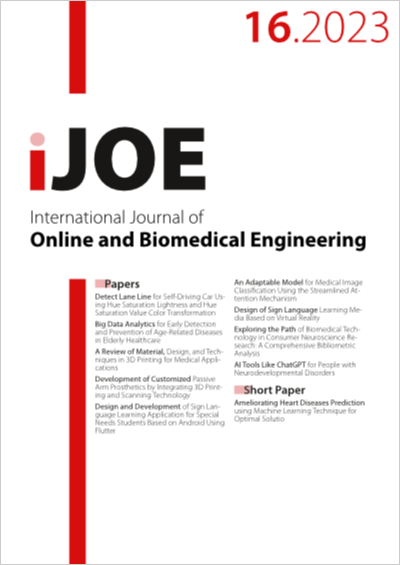Design of Sign Language Learning Media Based on Virtual Reality
DOI:
https://doi.org/10.3991/ijoe.v19i16.44671Keywords:
sign language, virtual reality, application development, communication, accessibilityAbstract
Sign language has become a very important means of communication for individuals with hearing loss, allowing them to interact with people who are not hearing impaired. In recent years, virtual reality (VR) technology has advanced rapidly, opening up new opportunities to enhance the user experience in various situations. This study aims to design and develop an easy-to-use virtual reality-based interactive sign language application. The software development method used is the Software Life Cycle Development Method (MDLC), which includes the stages of analysis, design, implementation and testing. This app is designed to run on affordable and popular VR devices to make it accessible to as many individuals as possible. In the development process, we conducted an analysis of various sign languages used globally, focusing on hand gestures and facial expressions which have an important role in sign language communication. Users can learn and practice sign language through interactive experiences in a virtual environment that mimics real-life situations. This application is also equipped with visual and audio feedback features to help users improve and hone their skills. At the testing stage, this application was evaluated through trials involving participants with diverse backgrounds in the use of sign language. The test results show that users feel involved in the VR experience and experience increased confidence in using sign language after using this application. This research proves that VR technology can be an effective tool in sign language learning and development. Thus, the virtual reality-based sign language application that has been designed and developed in this study makes a significant contribution in increasing the accessibility of communication for individuals with hearing impairments. The implications of this research can be the basis for further development in the field of sign language and VR technology.
Downloads
Published
How to Cite
Issue
Section
License
Copyright (c) 2023 Dony Novaliendry, Khairi Budayawan, Rogi Auvi, Bayu Ramadhani Fajri, Yasdinul Huda

This work is licensed under a Creative Commons Attribution 4.0 International License.



